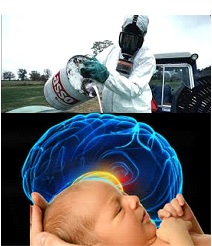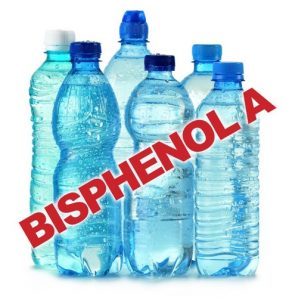
Exposure to common hormone-disrupting toxins in pregnancy and early childhood has been linked to the increased incidence of brain development disorders reported in the last decade.1

Recent data expands upon the link between endocrine-disrupting chemicals (EDCs) and maternal thyroid hormone signalling during early pregnancy, and how it impacts offspring IQ and influences possible neurodevelopmental disease risks.1
Researchers reviewed documented exposures to EDCs, which include pesticides and substances used in the manufacturing of many everyday products. These EDCs are reported to interfere with thyroid hormone (TH) function, yet public health policy does not completely tackle the risks to vulnerable population groups.1
 Two key phenols known to be thyroid-disrupting chemicals are bisphenol A (BPA) [mostly in plastics] and triclosan (TCS) [found in toothpaste]. Both BPA and TCS are manufactured in such large volumes that they are now readily found in human urine samples due to contamination of our environment and the food we consume.2 While research has shown thyroid hormone dysregulation as a result of BPA exposure in adults, heightened prenatal BPA exposure is associated in numerous sex-specific changes in child behaviour.1,2 For example, a positive association was found connecting BPA levels with ADHD-like neurodevelopmental behaviours in girls and boys, and anxious, depressive or aggressive behaviours in girls.
Two key phenols known to be thyroid-disrupting chemicals are bisphenol A (BPA) [mostly in plastics] and triclosan (TCS) [found in toothpaste]. Both BPA and TCS are manufactured in such large volumes that they are now readily found in human urine samples due to contamination of our environment and the food we consume.2 While research has shown thyroid hormone dysregulation as a result of BPA exposure in adults, heightened prenatal BPA exposure is associated in numerous sex-specific changes in child behaviour.1,2 For example, a positive association was found connecting BPA levels with ADHD-like neurodevelopmental behaviours in girls and boys, and anxious, depressive or aggressive behaviours in girls.3
Popular flame retardants, such as Tetrabromobisphenol A (TBBPA) are also EDCs in the form of a modified, halogenated BPA that has been recognised in vitro as a neurotoxicant that interrupts several biological pathways including Zinc and Calcium homeostasis, stimulating oxidative stress as well as being a partial Gamma-amino butyric acid (GABA) agonist.1 So what does this mean in plain English: basically zinc and calcium are essential minerals for our body and brain to function. If these minerals can’t be absorbed or utilised by our body, this can lead to significant imbalances and development of disease. GABA is a main regulator of our brain’s neurotransmitters and, when not functioning properly, can result in behavioural problems from anxiety to violence and addictions.
Phthalates are common, volatile EDCs and are mainly used as plasticisers and softeners in various commercial products such as furniture, cosmetics, food packaging, and medical equipment such as catheters and perfusion bags/drips.4 A strong and positive association connects child urinary concentrations of metabolites from phthalates, di-(2-ethylhexyl) phthalate (DEHP) and di-n-butyl phthalate (DnBP), and symptoms of ADHD.3
Our society is exposed to many chemicals at any given time, making it increasingly important to investigate the effect of EDCs as a whole, since synergistic impacts of chemical mixtures without individual effects have been reported.5 These findings show that contact with thyroid-disrupting chemicals in the environment pose real risks for child development and health, emphasising the urgent need for further public health investigation and intervention strategy.
If you feel that you, or your child, may be affected by chemicals, arrange a consultation at True Medicine by calling 07 5530 1863. There are several methods of assessing chemical toxicity that are reliable and non-invasive.
References
1.Mughal BB, Fini J-B, Demeneix B. Thyroid disrupting chemicals and brain development: an update. Endocr Connect. 2018:EC-18-0029. doi:10.1530/EC-18-0029.
2.Tato T, Salgueiro-González N, León VM, González S, Beiras R. Ecotoxicological evaluation of the risk posed by bisphenol A, triclosan, and 4-nonylphenol in coastal waters using early life stages of marine organisms (Isochrysis galbana, Mytilus galloprovincialis, Paracentrotus lividus, and Acartia clausi). Environ Pollut. 2018;232:173-182. doi:10.1016/j.envpol.2017.09.031.
3.Arbuckle TE, Davis K, Boylan K, Fisher M, Fu J. Bisphenol A, phthalates and lead and learning and behavioral problems in Canadian children 6-11 years of age: CHMS 2007-2009. Neurotoxicology. 2016;54:89-98. doi:10.1016/j.neuro.2016.03.014.
4.Ligocka D, Sobala W, Hanke W. Effect of Environmental Phthalate Exposure on Pregnancy Duration. Int J Occup Med Environ Health. 2016;29(4):683-697. doi:10.13075/ijomeh.1896.00691.
